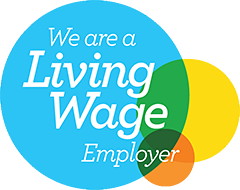Council Tax
Council Tax
The Council Tax was introduced on 1 April 1993. It is a local charge on all households and pays for local services such as schools, libraries, leisure facilities and refuse collection.
The Assessor is responsible for compiling and maintaining the Council Tax Valuation List which shows the band of each house in Edinburgh and the Lothians.
Each house has been put into one of eight bands according to its open market value as at 1 April 1991 subject to certain banding assumptions which the Assessor must make.
Council Tax Bands in Lothian
| Band | Property Value as at 1st April 1991 |
|---|---|
| A | Dwellings with a Capital Value of up to £27,000 |
| B | Dwellings with a Capital Value of between £27,001 and £35,000 |
| C | Dwellings with a Capital Value of between £35,001 to £45,000 |
| D | Dwellings with a Capital Value of between £45,001 to £58,000 |
| E | Dwellings with a Capital Value of between £58,001 to £80,000 |
| F | Dwellings with a Capital Value of between £80,001 to £106,000 |
| G | Dwellings with a Capital Value of between £106,001 to £212,000 |
| H | Dwellings with a Capital Value over £212,000 |
Self-Catering
You can check your Council Tax band on the Scottish Assessors Association Website.
If you have purchased or moved into a newly built property and it doesn’t appear on the Scottish Assessors’ Association website please contact us so that it can be added to the Council Tax Valuation List without any delay to your Council Tax payments. When the property has been added to the Valuation List, a Council Tax Banding Notice will be sent to the owner and council tax payers.
Please be aware that if you have purchased a property and it had been altered or extended by the previous owner, the band will be reviewed and the house may be placed in a different band from the date of sale.
To get more information about the banding process, please visit the Scottish Assessor’s Association website. For details of the banding assumptions please visit https://www.saa.gov.uk/council-tax/statutory-assumptions-applied-to-banding/
If you are the owner of the property or the person liable to pay Council Tax for it, you may lodge a proposal to alter the Council Tax Valuation Band as follows:
- within six months of becoming the owner or the liable person
- within six months of the Assessor issuing a notice to alter the band
- within six months of an appeal decision, which is a relevant decision, in respect of a dwelling comparable to yours which gives you reasonable grounds to contend that the band of your dwelling should be changed
- at any time if you believe there has been a “material reduction” in the value of the dwelling (see below)
- at any time if you believe there has been a “material increase” in the value of the dwelling and it, or any part of it, has subsequently been sold (see below)
- at any time if the balance between domestic and Non-Domestic use changes (for example, in hotels or boarding houses).
- at any time to add from a particular date a dwelling not shown on the list
- at any time to delete from a particular date a dwelling shown on the list
The easiest way to lodge a proposal is on the SAA website –
- Go to the Council Tax Bands search on the Home Page of the SAA Website to identify your property by entering the property address or post code.
- Click on the address in the “Select Property” column and then click on the “Make a proposal” button where the proposal form and further detailed guidance to help you through the process can be found.
- You will receive an e-mailed acknowledgement (if you provide an e-mail address) that the local Assessor has received your submission. The assessor will subsequently write to you to confirm if your proposal is either valid or invalid as detailed in the legislation.
Alternatively, you can obtain, from your local Assessor, a Proposal Form which can be completed and posted.
When a valid proposal has been made a member of the Assessor’s staff will discuss your proposal with you. If it cannot be resolved you may have a right of appeal to the First-tier Tribunal for Scotland.
Where the proposal is considered by the Assessor to be invalid due to lack of information the Assessor may serve notice on the proposer to that effect. If the proposer disagrees with the opinion of the Assessor the proposer may appeal against the notice, to the First-tier Tribunal for Scotland, no later than 28 days after the Assessor’s service of notice.
Where the proposal is considered by the Assessor to be invalid due to lack of title or out of time the Assessor may serve notice on the proposer to that effect. If the proposer disagrees with the opinion of the Assessor the proposer may appeal against the notice, to the First-tier Tribunal for Scotland., no later than 28 days after the Assessor’s service of notice.
Material Reduction in Value
A material reduction in value may result from the demolition of any part of the dwelling, any change in the physical state of its locality or any adaptation of the dwelling to suit a person who is physically disabled. A reduction in value caused, for example, by a downturn in the housing market, does not count for this purpose.
Material Increase in Value and Subsequent Sale
A material increase in value may result from building, engineering or other works carried out on the dwelling. Any change in the Council Tax band following on a material increase in value will only take effect after the property is next sold.
If your house is being used as self-catering or short let holiday accommodation, our office may review its status and consider whether or not it is liable for business rates. Please contact us for further information.
You may have received a letter from our office requesting access to your property, requesting an update on the progress of a building warrant or planning application or requesting information regarding a newly built property. If you have received a letter you can reply via our contact page. Please remember to include any reference or case number that appears on the letter / form.





